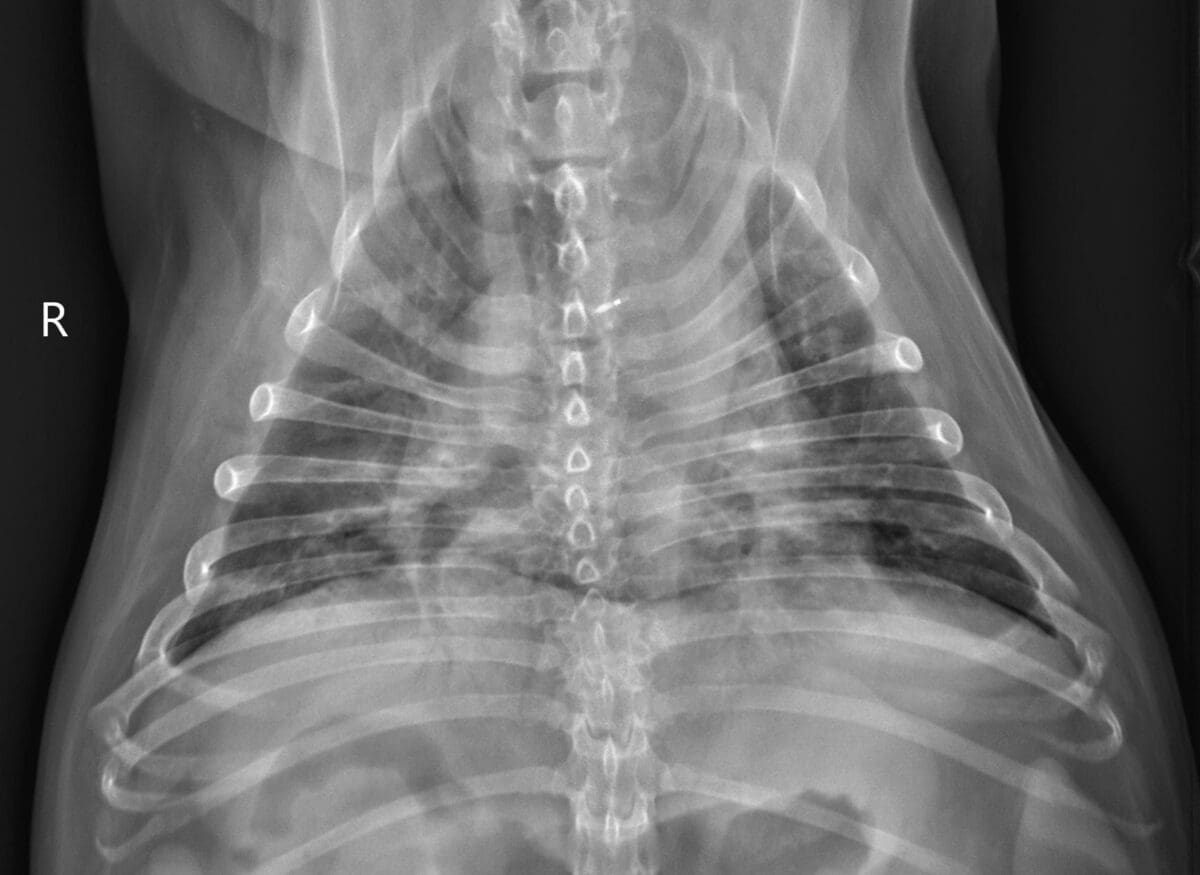During the course of my emergency and critical care career I have seen a number of dogs that presented to the emergency room in acute respiratory distress and fulfilled almost all ARDS or VetARDS criteria (see below), however all of these patients were missing one important criterion that did not let me make a diagnosis of ARDS with confidence. This criterion is the presence of an underlying disease or risk factor predisposing them to the classic ARDS. In this article, I will discuss a so-called “idiopathic ARDS”, also known as an acute interstitial pneumonia (AIP). I will speculate that this pathologic condition remains underdiagnosed in veterinary medicine and its true prevalence in dogs and cats is unknown.
Five criteria categories were established for VetARDS, with 4 required criteria and a fifth criterion that is highly recommended although considered optional at this time (Wilkins et al, JVECC 2007):
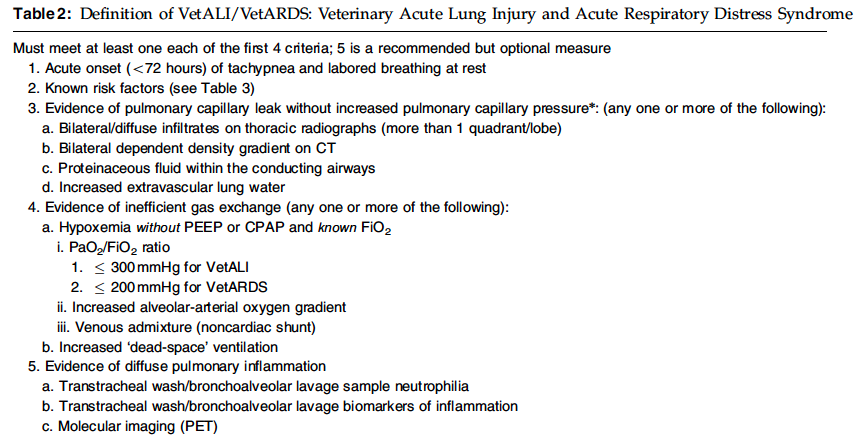
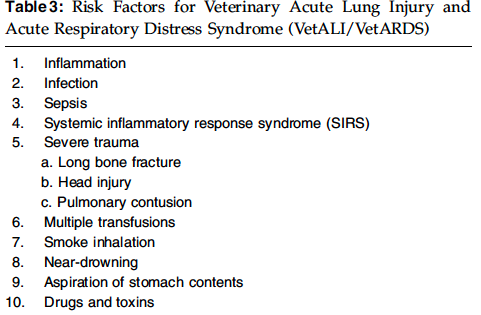
Interestingly enough, a disease process called acute interstitial pneumonia (AIP) may mimic classic ARDS and is well described in human literature. AIP is a rapidly progressive idiopathic interstitial pneumonia characterized by the presence of an organizing form of diffuse alveolar damage (DAD) on histopathological examination of lung specimens. Although the histological pattern is indistinguishable from that found in ARDS, the term AIP is reserved for cases of unknown cause (American Thoracic Society/European Respiratory Society International Multidisciplinary Consensus Classification of the Idiopathic Interstitial Pneumonias, 2002).
Exclusion of a precipitating or etiological agent (which is usually identifiable in patients with ARDS) is one of the diagnostic criteria for AIP. The mortality from AIP is about 70% and is higher than that from ARDS in people (Vourlekis 2004, CCM).
An excellent review of interstitial lung disease in dogs and cats (ILDs) was published in the Veterinary Journal by Carol Reinero in 2019 (University of Missouri, Comparative Internal Medicine Laboratory, Board-Certified Specialist in Small Animal Internal Medicine). According to the author, AIP is unique in terms of its time course, and AIP has been termed “idiopathic ARDS” because of its indistinguishable clinicopathologic features to ARDS (Bonaccorsi et al., 2003). AIP is characterized by respiratory disease of <60 days duration; bilateral, diffuse infiltrates on imaging studies; the histopathologic lesion of diffuse alveolar damage (DAD); lack of an inciting event or predisposing condition; and no prior abnormal thoracic radiograph (Vourlekis et al., 2001). Humans with AIP develop acute respiratory failure, often necessitating mechanical ventilation, and mortality is high (Vourlekis et al., 2001).
To the best of my knowledge, there have been no reports in dogs or cats describing idiopathic ARDS or acute interstitial pneumonia. I will concur with Dr. Reinero who said that
“Veterinarians should be on the lookout for AIP in dogs or cats with an ARDS-like presentation without a known risk factor and in which DAD is documented”.
In my opinion, the main reason why AIP is almost never on the veterinarians’ radar is because it requires an open lung biopsy for a definitive diagnosis, which is rarely performed in veterinary medicine. According to Kao et al., “The critical point in the diagnosis of AIP is to exclude all possible etiologies using the available methods. However, there is no standard laboratory protocol for investigating all possible etiologies. Actually, the diagnostic rate for AIP depends on how aggressive the diagnostic approach is, such as open lung biopsy in ARDS patients”.
Multiple papers showed that AIP can be successfully treated with parenteral corticosteroids, often at high doses. Suh and colleagues (Suh et al, 2006) reported survival rates of 80% in a small series of ten patients with AIP, all of whom required mechanical ventilation and underwent open lung biopsy (on median hospital day 4). In these patients, high-dose corticosteroid pulse therapy had been initiated (on median hospital day 3.5) after respiratory infection had been ruled out by means of an aggressive diagnostic workup (including bronchoalveolar lavage performed on median hospital day 2). The authors had postulated that the approach of aggressive diagnostics, mechanical ventilation with lung-protective strategy, and early institution of high-dose immunosuppressive therapy could have led to the improved clinical outcome (Suh et al, 2006).
What if you gave steroids to the patient who had a classic ARDS and you just missed the underlying condition? Combined, the studies appear to show an improvement in mortality in people with ARDS if steroids are started within the first 14 days of illness (Meduri, 2016). However, there is a suggestion that more rapid tapering of steroids may have resulted in an exacerbation of inflammation-related organ failure and increased adverse outcomes. Also, there is a strong signal from the largest study that starting steroids after 14 days increases mortality (Steinberg, 2006).
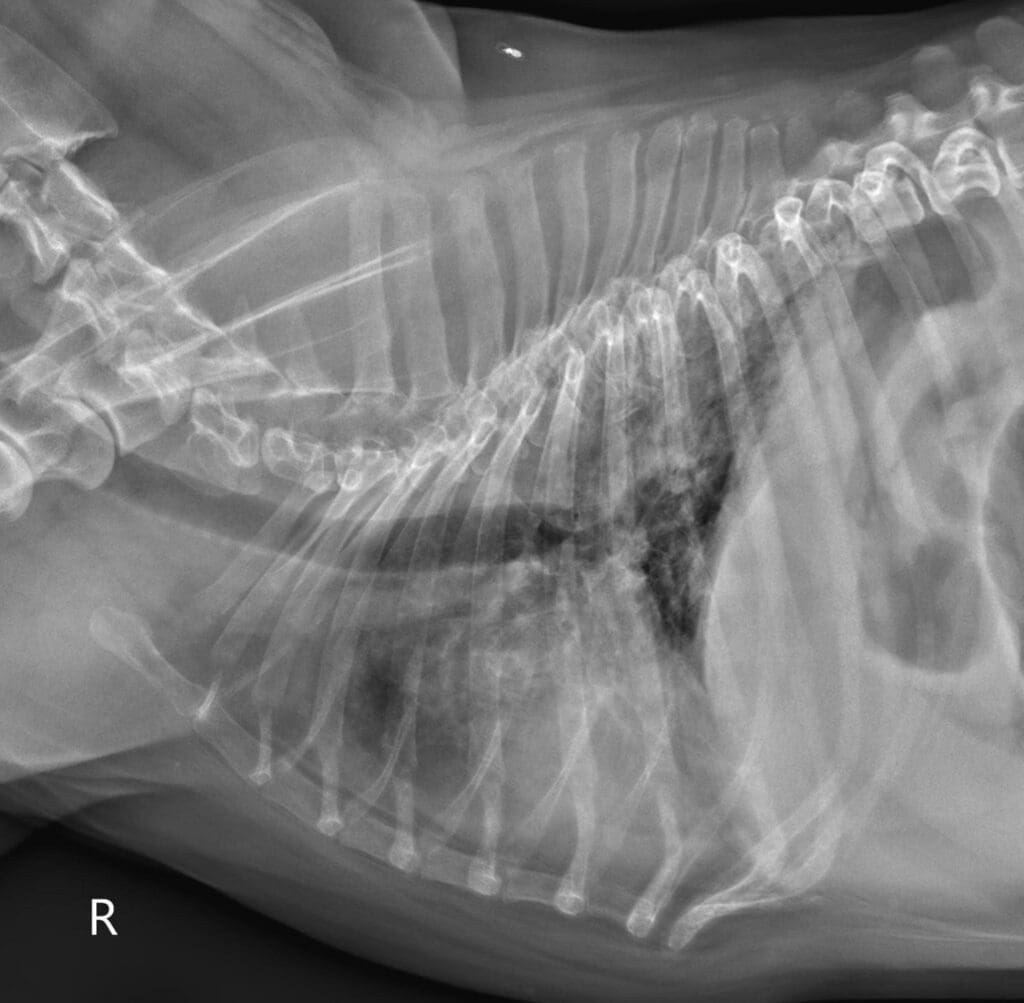
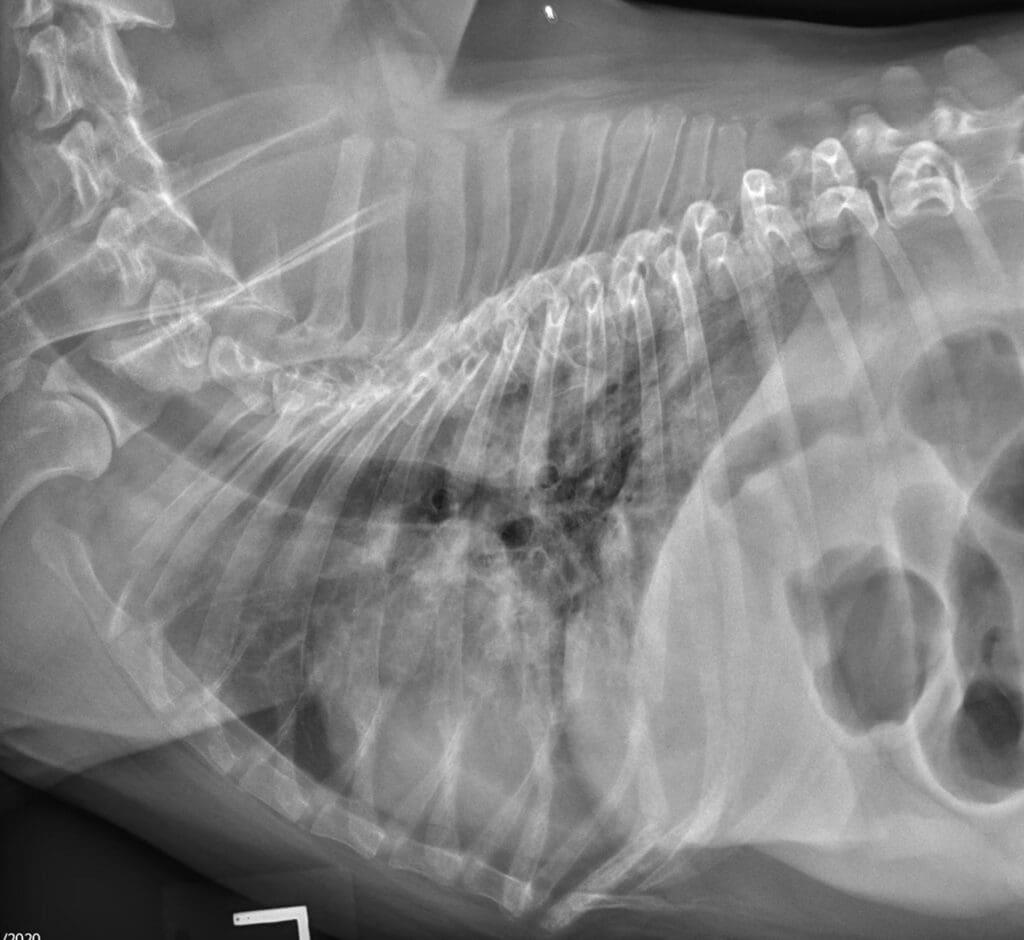
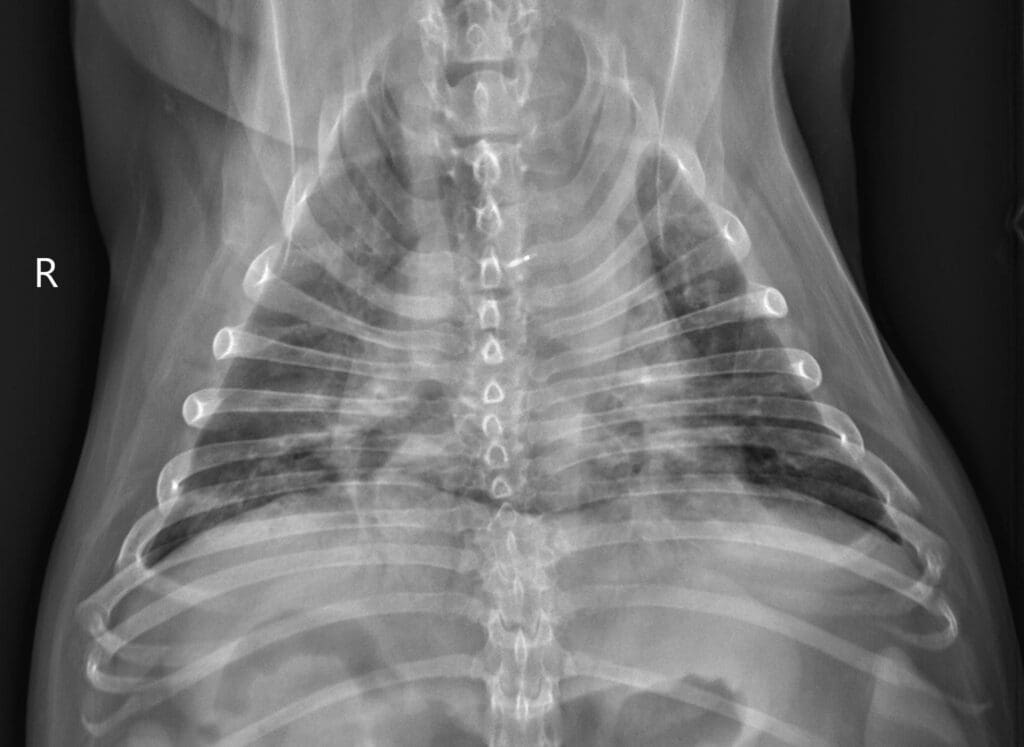
Take-aways
I strongly believe that veterinarians dealing with acute respiratory distress patients should be aware of AIP diagnosis, even though this condition is rarely described in the veterinary literature. Patients presenting with an acute bilateral parenchymal lung disease without evidence of left-sided congestive heart failure or typical underlying conditions predisposing them to ARDS or non-cardiogenic pulmonary edema, should have AIP as one of the differentials. Ideally, a complete work-up including BAL, bronchoscopy and thoracic CT should be performed to rule out common infectious and non-infectious causes of acute parenchymal lung disease. Open lung biopsy may be indicated to diagnose AIP in some selected patients. If the patient will not tolerate such a work-up or it is not feasible and available, an empirical therapy with immunosuppressive doses of corticosteroids should be strongly considered in the right population of patients.
References
- Wilkins et al. Acute lung injury and acute respiratory distress syndromes in veterinary medicine: consensus definitions: The Dorothy Russell Havemeyer Working Group on ALI and ARDS in Veterinary Medicine; JVECC 2007.
- American Thoracic Society/European Respiratory Society International Multidisciplinary Consensus Classification of the Idiopathic Interstitial Pneumonias. Am J Respir Crit Care Med. 2002.
- Vourlekis et al. Acute interstitial pneumonia. Clin Chest Med, 2004.
- Reinero C. Interstitial lung diseases in dogs and cats part I: The idiopathic interstitial pneumonias. Vet J, 2019.
- Bonaccorsi et al. Acute interstitial pneumonia: report of a series. Eur Respir J, 2003
- Vourlekis et al. Acute interstitial pneumonitis: current understanding regarding diagnosis, pathogenesis, and natural history. Semin Respir Crit Care Med, 2001.
- Suh et al. Early intervention can improve clinical outcome of acute interstitial pneumonia. Chest, 2006.
- Meduri et al. Prolonged glucocorticoid treatment is associated with improved ARDS outcomes: Analysis of individual patients’ data from four randomized trials and trial-level meta-analysis of the updated literature. Intensive Care Med, 2016.
- Steinberg et al. Efficacy and safety of corticosteroids for persistent acute respiratory distress syndrome. N Engl J Med, 2006.

